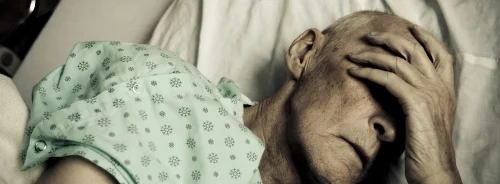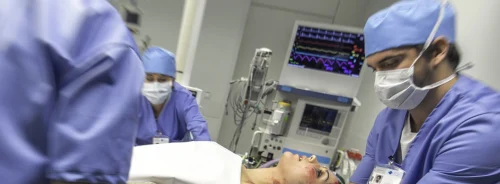ICU Management & Practice, Volume 16 - Issue 3, 2016
 Three objective criteria could
identify out-of hospital cardiac arrest
(OHCA) patients with zero chance of survival, who can be considered for organ
donation. Prof. Xavier Jouven, Georges Pompidou European Hospital, Paris, and colleagues,
analysed data from two registries and a clinical trial, and found that there
is essentially no chance of survival in patients whose OHCA is not witnessed
by emergency medical services personnel, who have nonshockable initial cardiac
rhythm, and in whom spontaneous circulation does not return before receipt of
a third 1-mg dose of epinephrine (Jabre et al. 2016).
Three objective criteria could
identify out-of hospital cardiac arrest
(OHCA) patients with zero chance of survival, who can be considered for organ
donation. Prof. Xavier Jouven, Georges Pompidou European Hospital, Paris, and colleagues,
analysed data from two registries and a clinical trial, and found that there
is essentially no chance of survival in patients whose OHCA is not witnessed
by emergency medical services personnel, who have nonshockable initial cardiac
rhythm, and in whom spontaneous circulation does not return before receipt of
a third 1-mg dose of epinephrine (Jabre et al. 2016).
Prof. Jouven (pictured) told ICU Management & Practice that he would like these results to contribute to elaborating new recommendations about out-of-hospital cardiac arrest patients. "We are aware there is a psychological barrier, but the possibility to collect organs from a proportion of those cardiac arrests represents an important opportunity to fill the gap of organ shortage,” he said.
Existing termination-of-resuscitation rules help to identify cases where further resuscitation is futile, but do not take into consideration the potential utility of transporting dead patients to the hospital for organ donation. Applying the three criteria to the validation cohorts, the researchers found that between 8 and 12% of patients with no chance of survival might have had organs that were potentially suitable for transplantation. They applied the eligibility criteria used in France for kidney retrieval from uncontrolled donation after cardiac death (UDCD). Jouven said that they considered this new approach first for kidney donation. In Europe kidney allograft represents 60% of all allografts, with 15,000 new grafts per year. In future this early identification may be applied for other organ donation (liver, cornea), he added.
The researchers acknowledge that their results may be overestimates, as some UDCD eligibility criteria may be difficult to verify at the OHCA scene. They recommend that emergency medical services develop protocols and implementation plans with their organ donation programmes to optimise donation after OHCA, and implement these three objective criteria in their protocols for cardiac arrest. “Rapid referral to an organ donation institution under mechanical ventilation and continuous automated external cardiac massage should be considered for patients with no chance of survival,” they write.
References:
Jabre P, Bougouin W, Dumas F et al. (2016) Early identification of patients with out-of-hospital cardiacarrest with no chance of survival and consideration for organ donation. Annals Intern Med, 13 Sept. doi: 10.7326/M16-0402.





